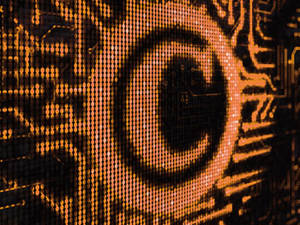Intellectual Property Rights
Intellectual property rights, mainly copyrights and patents are an important success factor for ACGT. They can be relevant incentives for research but might also hinder technical developments and patient commitment. They are of specific importance as ACGT sees itself as an open source/open content initiative.
Copyrights are the most relevant legal tools to protect components of ACGT such as computer software developed and the GRID-infrastructure. They grant, generally speaking, protection for the expression of a work from moment of its creation for 70 years based on the assessment of the originality criteria.
 In ACGT the partners have been developping a number of computer software (applications). It is often said that computer software posses a “hybrid” nature which means they have some elements of expression and others of functionality. Their means of protection lies under the copyright framework, thus, the originality and creativity criteria in their creation or adaptation is the decisive factor to determine their protection. The GRID infrastructure developed in ACGT is made of a cluster of different interconnected resources networks which allow the users to execute a variety of applications such as those useful for scientific research or data management. They contain a number of layers, therefore the way they are selected and arranged on The GRID may also be subject to copyright protection.
In ACGT the partners have been developping a number of computer software (applications). It is often said that computer software posses a “hybrid” nature which means they have some elements of expression and others of functionality. Their means of protection lies under the copyright framework, thus, the originality and creativity criteria in their creation or adaptation is the decisive factor to determine their protection. The GRID infrastructure developed in ACGT is made of a cluster of different interconnected resources networks which allow the users to execute a variety of applications such as those useful for scientific research or data management. They contain a number of layers, therefore the way they are selected and arranged on The GRID may also be subject to copyright protection.
The question whether computer software is also protected by patents revolves within the wordings of Art 52 European Patent Convention (EPC) giving (in principle) a negative answer on the patentability of software. Unfortunately the answer may no longer be that clear due to current developments: As a consequence of a recent case (the so called Symbian case) the President of the European Patent Office (EPO) referred four questions to the Enlarged Board of Appeal of the EPO which aim at harmonizing and clarifying the circumstances under which individual features can contribute to the technical character of a patent claim and make computer implemented inventions patentable. It is important to highlight that due to the fact that the EPO referred four questions to the Enlarged Board of Appeal, patent applications in this context may remain unclear until the answers are made. The situation will have to be closely monitored within ACGT.
In addition, taking into account that ACGT owes its existence to the participation of patients through clinical trials, an important question is ‘Who owns the patient’s data?’ This question has to be answered not only legally but also ethically. Regarding the donation of biological material and data, the gift model has been established in clinical research without delineating the rights of ownership.
We propose in our current work for ACGT a model slightly modifying the donorship-paradigme: In this respect, patients are asked to sign an informed consent form concerning the processing of their data for further research within ACGT. The Center for Data Protection (CDP) is empowered to conclude legally binding contracts. It provides security and trust to the framework. For this reason, the CDP could also act as a “Trusted Party” and could define property rights on the biological material and the data coming out of this material as a “common” In order to find a balance between the interests of patients, doctors and researchers, CDP as the “Trust” could hold a percentage of the net profits and re-distribute the revenues to the community of patients.
Further research will be done to clarify whether such an approach, trying to indirectly let patients participate at the value of “their” data, is legally and ethically feasible. In any case the work already done has two major outcomes: First, the CDP is an invention that might be important not only in the data protection field but as a basic tool for pending ethical and legal issues in the IP-area as well. ACGT could establish a best practice here for other projects. Second, IP-issues in the area of biological data/information are important factor in convincing patients to participate and give their consent. Understanding their motives and rights is an important success factor for the whole project.
Eva Egermann, Nikolaus Forgó, Institute of Legal Informatics
University of Hanover

